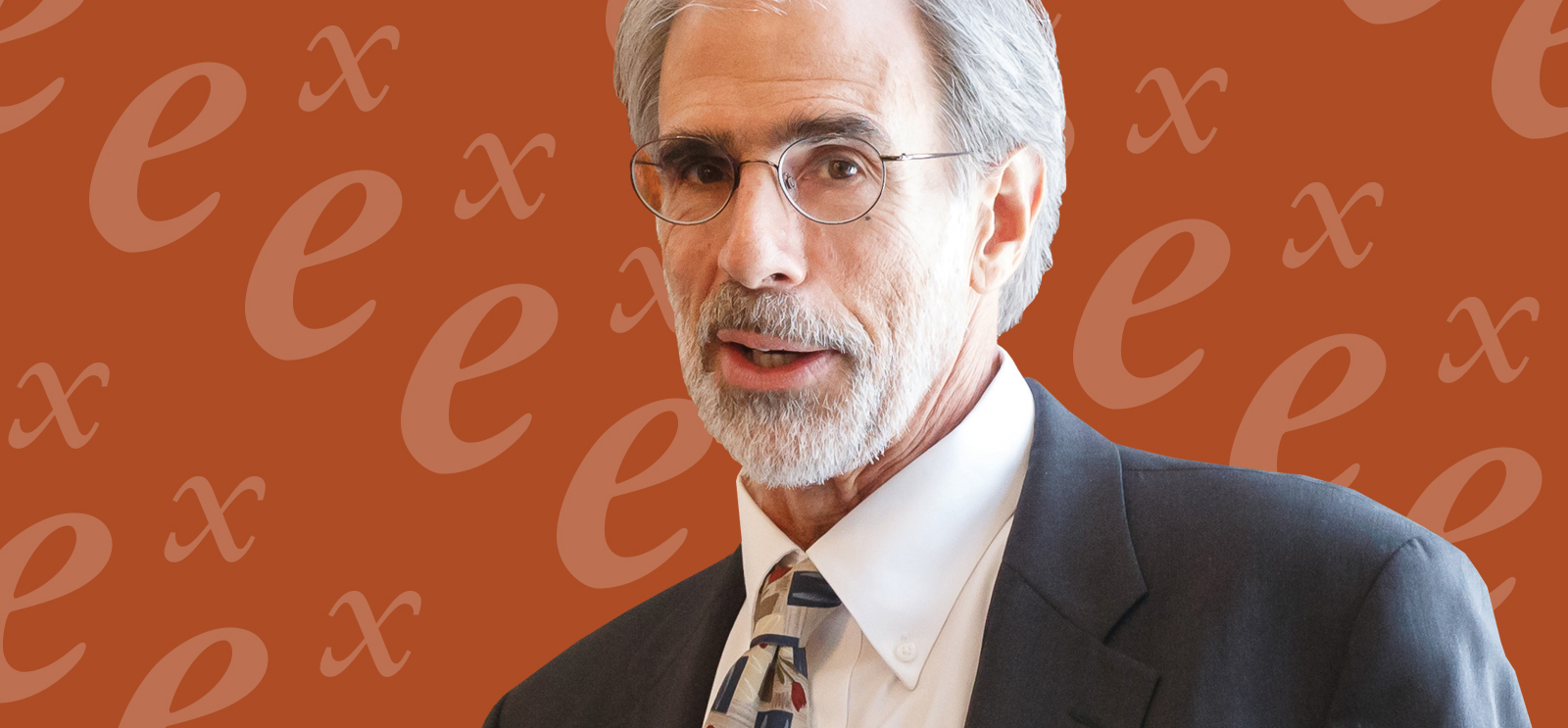

This article originally appeared in the Fall 2015 issue of Inquiry, the biannual publication produced for University of Chicago Physical Sciences Division alumni and friends.
David Eisenbud, SB’66, SM’67, PhD’70, wears a lot of hats. A mathematics professor at the University of California, Berkeley; director of the Mathematical Sciences Research Institute (MSRI); and former president of the American Mathematical Society, he is also an author, musician, and juggler. Eisenbud, who received a 2015 Alumni Association professional achievement award, tells Inquiry about algebraic geometry, the first national mathematics festival, and the significance of the number 3264.
How did you first become interested in mathematics?
My father was a theoretical physicist, so it wasn't far to look. He showed me how to solve simultaneous equations, which excited me a lot. When I was about 12, I began announcing that I was going to be a mathematician. I don't know what prompted that exactly. It was the warm contact with my father that started the ball rolling.
Your father started another ball rolling—or flying—right?
He taught me to juggle three balls around the time I went off to college, and I remember practicing while walking around the circular corridor on my floor of Pierce Tower. Later on he and I bought a set of clubs and tried to learn club passing; we made some progress, but not very much. Later I met Joe Buhler—a pro-level juggler, a mathematician from Reed College at the time, and eventually one coauthor on “Juggling Drops and Descents,” a paper on the math behind the art form. He was a great teacher, and my juggling took a great leap forward. I still practice a bit and juggle with Joe whenever we’re together.
You wrote a graduate-level textbook, Commutative Algebra with a View Toward Algebraic Geometry (Springer, 1995). What is commutative algebra and algebraic geometry?
Those are two sides of the same thing. Algebraic geometry started with the Greeks and conic sections. If you think about a slice of a cone, you have a circle, an ellipse, a hyperbola, or a parabola, and those curves can be defined in a plane by a quadratic equation.
[[{"type":"media","view_mode":"media_original","fid":"3132","attributes":{"alt":"","class":"media-image","height":"393","typeof":"foaf:Image","width":"500"}}]]
The way that people study modern algebraic geometry is to look not at that equation but at the functions on the circle. Let's look at polynomial functions, a function with two variables, like 5x + 7y. If I apply that to a point on the circle, I get a number. Those functions form what's called a commutative ring—that it’s a ring means you can add, subtract, and multiply functions by adding, subtracting, and multiplying their values—which determines the geometric form. Algebraic geometry studies geometric objects, defined by polynomial equations, by studying the functions on those objects.
What fields use algebraic geometry?
String theory is a big application because strings are curves in a sense. It also appears in mathematical biology, robotics and motion planning, and in applications where you have to deal with simple functions or constraints, like optimization.
Who influenced you at UChicago?
I've always been deeply involved in music and joined the Collegium Musicum—a performing group that gave a concert in Bond Chapel every quarter. When I arrived I played the flute and recorder; with them I slowly expanded and played recorder, krummhorn, wooden flute, and eventually viola da gamba. The Collegium Musicum was run at the time by Howard Mayer Brown, a famous musicologist who played the same assortment of instruments as I did. His partner, Roger Weiss, AM’51, PhD’55, a social sciences professor, was a tenor. Brown hosted us at his house, and we became personal friends. I got quite an education from the deep culture of the leaders of the group.
What’s been the highlight of your career thus far?
Certainly the fact that I've been director of MSRI in Berkeley now for a total of a dozen years. Last April MSRI hosted the first national mathematics festival in Washington, DC, with an event supporting basic research, several events about mathematics education, and a public festival where 27,000 people came to about 70 events in the Smithsonian museums.
Much of my work with MSRI was made possible by the guidance of my wife, Monika, who's a physician. For example, she was very involved in the design of a new wing we added to the building.
What are you working on now?
I’m making final corrections on a book written with Harvard’s Joe Harris. It has a funny title: 3264 & All That: A Second Course in Algebraic Geometry (Cambridge University Press, forthcoming). The number 3264 references the solution of a classic algebraic geometry problem. “All that” comes from a spoof of English history called 1066 & All That (W. C. Sellar and R. J. Yeatman), which claims there are only two memorable dates in English history—one of them is the Battle of Hastings. This book 3264 has been a 10-year project. The only way anyone writes another book must be to forget the pain of writing the one before.
